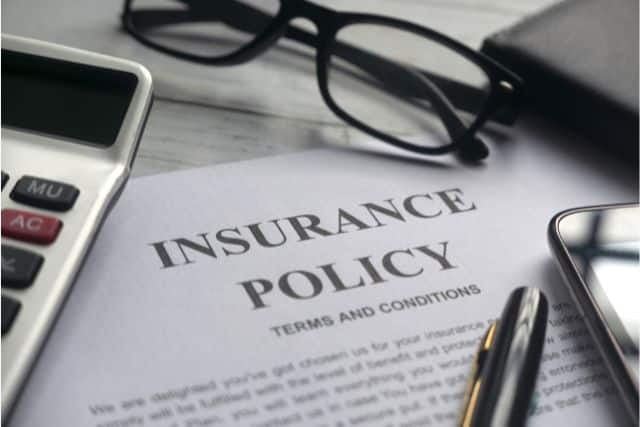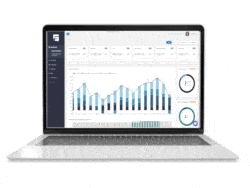Commercial tenants and building owners face unprecedented pressure from rising insurance costs in 2025. For the past several years, property and liability insurance premiums have climbed steadily across the United States. This article explores the causes of these major insurance cost increases. It will also discuss a few strategies to navigate the changing landscape of commercial real estate insurance.
Overview of Commercial Real Estate Insurance Cost Trends
Commercial real estate insurance rates rose steadily throughout 2024 and into 2025, though not as quickly as in prior years. According to WTW’s Commercial Lines Insurance Pricing Survey (CLIPS), commercial insurance rates increased by 6.3% in Q1 2024, followed by 6.1% in Q3, and 5.6% in Q4. By Q1 2025, the rate of increase had slowed to 5.3%, but double-digit hikes persisted in select lines such as commercial auto and excess/umbrella liability.
2025 Cost Trends in Property Insurance
In 2024, property insurance premiums were double those of 2021 on average. This increase far outpaced inflation.
Some of the main forces behind rising costs include heightened weather risk, claims histories, and building characteristics. Insurers have also cited the impact of catastrophic events, rising reinsurance costs, and inflation in labor and materials as key factors.
The property market began to stabilize in early 2025 for non-catastrophe-exposed accounts. However, for properties in high-risk areas, or those with a history of claims, challenges remain. Let’s take a closer look at the major trends of
2025 Cost Trends in Liability Insurance
Liability insurance has not escaped the trend of rising costs. In Q1 2025, umbrella/excess liability and commercial auto coverages experienced the most significant rate hikes, both increasing by 6.7% according to Market Scout’s Market Barometer. This trend is expected to continue into 2025, driven by factors such as driver shortages, “nuclear verdicts” (large jury awards), and rising claims frequency and severity.
The casualty insurance market, which includes liability lines, saw an 8% rate increase in Q1 2025, up from 7% in Q4 2024, with underwriters tightening capacity in response to large losses.
What are Factors Driving Insurance Cost Increases?
Insurance costs can be difficult to predict and explain. However, a few of the reasons behind recent trends include:
- Natural disasters
- Increased cost of construction
- Social inflation and litigation
- Stricter underwriting
- Occupancy and tenant types
- Aging properties
- Age of equipment
- Security and safety concerns
- Location
- Tariffs
Let’s dive deeper into each of these major factors.
Natural Disasters
All United States properties face elevated risks from fires, floods, earthquakes and severe storms that have driven up insurance costs and coverage requirements. It’s also a reflection of very dry forests and a climate driven increase in heat which affects weather patterns throughout the USA.
Due to the many losses many insurance companies are leaving markets they deem too risky, which means the players who are left, have some room to increase their pricing to manage the increased risk.
Increased Cost of Construction
Insurance rates are also affected by increased costs of construction, especially as material costs rise.
Social Inflation and Litigation
The rise in litigation, larger jury awards, and broader definitions of liability (collectively known as social inflation) have contributed to higher claim costs and, consequently, higher insurance premiums. This trend is particularly pronounced in liability and commercial auto coverages.
Stricter Underwriting
Pricing surges are also tied to increased, stricter underwriting. The impact of these changes means less coverage. Building owners and tenants are being faced with increased deductibles, reduced coverage or exclusions in order to provide insurance as required by existing financing i.e. lenders. Legal and regulatory changes as well as claims history and building age have also forced increased insurance premiums.
Occupancy and Tenant Types
The nature of tenants’ businesses can also impact your building insurance premiums. For example, a property with a restaurant tenant may be considered higher risk due to the increased potential for fire or water damage. Other high-risk tenant types include manufacturing or industrial businesses, some of which might even require specialized coverage. Understanding your tenant mix and their associated risks can help you anticipate and better manage potential premium increases.
Aging Properties
Older properties that have not replaced or upgraded plumbing, electrical systems, structural systems, and fire suppression/monitoring systems are seen as higher risk and drive an increase in insurance costs as well.
Properties that are built using the most recent International Building Code (IBC) are more resistant to fire and damage than buildings that were built before the code was introduced. In other words, buildings built 100 years ago are more susceptible to fire and have a higher risk factor. Older buildings may be less structurally sound, increasing the risk of damage from storms or other hazards.
Insurance companies respond to the risks of older properties with increases to premiums and sometimes coverage refusal. Some insurance companies are requiring major property upgrades (or reduced coverages) for older properties if property owners want to obtain insurance.
Age of Equipment
The age and condition of equipment and machinery within a business’s premises can also influence commercial property insurance costs. Older equipment may be more prone to malfunctions or breakdowns, increasing the risk of property damage or loss. Additionally, businesses with expensive or specialized equipment may require higher coverage limits, resulting in higher insurance premiums.
Security and Safety Considerations
Security and safety measures implemented within a business can impact commercial property insurance costs. Properties equipped with security systems, surveillance cameras, fire alarms, and sprinkler systems may qualify for discounts on insurance premiums due to the reduced risk of theft, vandalism, and fire damage. Similarly, businesses with comprehensive safety protocols and training programs in place may also benefit from reductions in insurance rates.
Location
Location of your property plays a significant role in determining the cost of commercial property insurance. Insurers evaluate the geographical risks associated with exposure to natural disasters like floods, earthquakes, or hurricanes. Properties in high-crime neighborhoods may also face higher premiums due to increased risk of theft or vandalism.
Even factors like proximity to emergency services, such as fire stations or hydrants, can reduce insurance rates.
Tariffs
The tariff policies currently in place are beginning to impact insurance costs. Recent tariffs on imported goods have led to increased construction material prices, which are now feeding into insurance premiums.
In states more vulnerable to climate-related risks, such as Florida and Louisiana, premium increases are significant. The escalation in construction costs are pushing up replacement cost valuations and, subsequently, insured values and premiums.
Replacement cost valuations from January 2024 to January 2025 rose by 5.5% nationwide, according to USI. States like Maine, Tennessee, Florida, Kansas, Minnesota, Montana, Idaho, Nevada, and Washington reported increases between 7.4% and 10.1%.
Higher replacement costs nationwide may lead to insurance companies having higher policy limits and premiums. Meanwhile, raw material shortages could slow loss recovery.
What is the Impact of Insurance Cost Increases on Commercial Tenants and Owners?
The sharp rise in insurance costs has direct consequences for both commercial tenants and building owners:
- Budget Strain: Insurance now represents a much larger share of operating expenses, forcing owners to raise rents or reduce coverage and potentially cut costs elsewhere. For tenants, these costs are often passed through as part of their common area expenses or triple net pass-throughs, increasing the overall cost of occupancy. This is on top of tax, maintenance and utility increases.
- Risk Management Challenges: Owners and tenants are being forced to accept higher deductibles, more exclusions, and even reduced coverage to manage costs, exposing themselves to greater financial risk.
- Risk of Underinsurance: Some tenants may choose less comprehensive coverage to save money. This exposes them, and possibly you as the owner, to greater financial risk from accidents.
Tips for Managing Rising Insurance Costs
You can’t control insurance trends, but you can use these strategies to navigate them:
- Conduct thorough research: know the hazards of your area and properties. Avoid high-risk locations and building types
- Perform price comparisons: it’s always good to shop around for the best available insurance rates
- Stay on top of maintenance: a well-maintained property can merit lower rates. It also decreases the chances of incidents and claims
How STRATAFOLIO Can Help
Navigate rising insurance costs with STRATAFOLIO’s tools built for commercial real estate. Track tenant insurance, manage crucial maintenance operations, and see all your financial information in a single intuitive platform. To learn more about STRATAFOLIO’s benefits for your business, schedule a free demo now.






